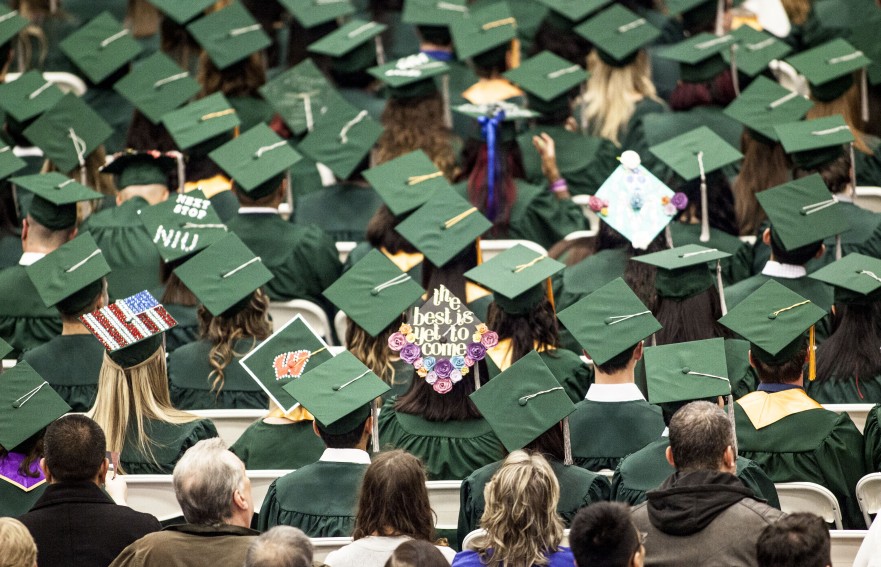Thinking back to my first day of high school, I remember feeling anxiety, nervous excitement, and fear of the unknown. I grew up in a small tight-knit community and knew most of the students in my class as we entered high school. What I do remember about that hot August day in Gilbert was attempting to find my classes, loving all the lunch options, and surviving the day without any major disasters.
But is this the norm? Do our incoming freshmen know many of their classmates? Will they look back at their first day in “big, bad high school” with relatively positive memories? And furthermore, will they look back at that important stepping stone year as a smooth transition into their high school careers?
Research from The Center for Supportive Schools shows:
- The changes and stressors associated with the transition from middle to high school often contribute to a significant decline in school connectedness, one of the most important predictors of student success
- During the transition from middle to high school, students often lose the relationships that they had with teachers and peers throughout middle school; they experience larger class sizes and fewer opportunities to interact with teachers; they experience a more competitive, impersonal, grade-oriented environment
- They must make important academic and social decisions that determine their likelihood of graduating from high school, going to college, or entering the workforce.
- The transition from middle to high school often marks the beginning of a number of problem behaviors including substance use, aggressive and violent behavior, and high-risk sexual behavior.
- For many, the transition proves too difficult and they leave school altogether. Students are most vulnerable for dropping out of school during and immediately following their first year of high school.
- This is particularly evident in high schools with large low-income student populations, where up to 40% of students drop out after ninth grade In fact, in many urban and rural communities across the country, 50% of the students who enter ninth grade will not graduate. (Peer Group Connection)
That leaves teachers like myself wondering how we can best support our freshmen as they transition into high school? And what are we currently doing that is working?
Many formal programs have been created with very structured transition activities. Our school used a very structured program in the past. In my experience, this program requires many formally trained teachers and students who are committed year after year to make the program a success. This may work for some schools, but teachers and students get burned out with another major commitment. While a formalized program can be successful, I believe it’s important to tailor to the school and its students’ needs to create successful frosh transitions programs.
Instead, we created four activities throughout the year that focus on welcoming and teaching students about our school and celebrating our traditions.
Activity 1: Welcoming Students
Our freshmen and student leaders are the only students on campus from 8:00am-10:30am the first day of school. We hold an assembly with silly and fun minute to win it games as well as practicing assembly traditions such as the presentation of our colors, National Anthem, and fight song. Then we break students into their 3rd period classes for small group activities with their teacher and student leaders. We believe it was important for students to meet one teacher and classmate they will spend the entire year during those initial first hours as freshmen. We believe this takes some of the fear away by connecting with kids and one of their teachers early.
We ask our student leaders to list things every freshman should know and to create a presentation to use on the first day of school in small groups.
Many formal programs expect students to reveal intimate details about themselves on their first day of school. I don’t even want to do that. I can’t imagine being brand new to a school and telling my peers about my hopes, fears, and dreams. Instead, we look for low-risk games. For example, give every student a few M & Ms and each color represents an easy question to answer such as your favorite movie and tv show. Students with that color, share around the circle.
Student leaders lead a tour around the school pointing out the “good” bathrooms, how to beat the lunch lines, where the yummy Ramen noodles and pizza are sold and many other “important” campus spots.
Our freshmen and leaders return to the gym for a closing assembly with a few more games. We strive to instill in our students the importance of getting involved and making the first day a successful and positive step into their next four years.
Activity 2: Upholding Traditions
We encourage every freshman to participate in a homecoming tradition dating back the school’s opening over 60 years ago. This year we advertised the event with posters and commercials, and over 450 kids hiked our school mountain to help paint the “S.” It was incredible to witness kids eager to be apart of the school culture and traditions.
Activity 3: Academic Success
Two weeks before the end of the first semester, several clubs and freshmen teachers help students prepare for semester exams with study sessions all over campus. Students can work on study guides, projects, read, or get help from tutors and teachers. Student Council provides hot chocolate and snacks. The participation was amazing. Freshmen really latched onto the importance of doing well in school.
Activity 4: Team Bonding
During AzMerit testing, we have one day when many freshmen do not test. So, we take advantage of this time to create bonds within their class. We plan four rotations for students including a field day, CPR training, and social/emotional reflections. Last, we hire a magician to put on an amazing show to entertain the kids. Watching their faces during the show is priceless.
Together, these four activities fit the needs of our students. We believe freshmen year is so important as it sets the stage for the next three years, and so we look at each event as an integral puzzle piece in onboarding and integrating our students into our campus culture. Essentially, we are teaching our kids how to be Vikings. A key component is staff commitment to the core belief that this is not simply freshmen teachers’ responsibility, (Heck, I don’t even teach freshmen) but this is our entire staff’s responsibility as we will all teach these kids over the next four years.
I ask you, how do you transition your students onto your campus? Do you have a magical, winning program that works for your school? Please share below. We are always looking for ways to improve!
PEER GROUP CONNECTION High School Transition Program Program Improves Student Graduation Rates A Report on Study Findings. (2013, November). Retrieved April 3, 2019, from https://www.attendanceworks.org/wp-content/uploads/2017/10/PGC_Program_Improves_Student_Graduation_Rates-Report_of_Findings.pdf










Comments 8
I found your post very interesting and even though we don’t have high schoolers on our campus, I do find that welcoming students the first day can set the stage for so many other things. I love the idea of having fun games instead of asking students to engage in the hard work on day 1. This is a good thing for me to begin to think about for next year.
Thank you so much for your comment! It’s so important to make kids feel welcome whenever they come to our schools.
We use the Links program which makes for a year long connection with our incoming freshman. Links meet with their freshman group once a month formally and check in with them informally each week. There are really great connections, and some not great connections, but each freshman knows 1 upperclassman they can get help from. The Links also lead our freshman orientation day and give tours to their group, so we start the connection even before school starts.
We used the Link program and saw mixed results. I think it works with smaller campuses, but we have so many incoming freshmen that we found it hard to make true connections. I’m glad your school is finding success with the program.
Not being a High School teacher I found myself learning a lot about the challenges and needs of High School students and teachers. These ideas sound like great ways to make sure the needs of students are met and I have learned a lot from the comments below explaining what worked for some schools and not for others. Thank you for sharing!
Thank you!
Lea I loved this post. As a freshman teacher I agree with you on all points. What I am starting to see every years more and more is these really nice kids show up on my doorstep and get jaded as they become a number. They are in classes with 35 other kids and making one on one connections is near to impossible. That’s when they turn to drugs, alcohol, you name it. I think if they just had the ability to connect better we could avoid so many of these issues. But what can you do when your class is like 800 kids and there is not even a dedicated counselor…..
So true! I can’t imagine being in a class of 600-800 kids. Our freshmen transitions program is work in progress. I would love to see more sustainable and consistent methods for connecting with the kids, especially our at risk kiddos. I have heard of a class that serves as an elective for these kids, but I don’t know much about it.